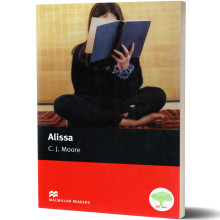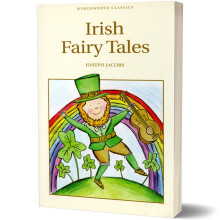- -5%
About the Book
The Last Man is Mary Shelley’s apocalyptic fantasy of the end of human civilisation. Set in the late twenty-first century, the novel unfolds a sombre and pessimistic vision of mankind confronting inevitable destruction. Interwoven with her futuristic theme, Mary Shelley incorporates idealised portraits of Shelley and Byron, yet rejects Romanticism and its faith in art and nature.
Mary Wollstonecraft Shelley (1797-1851) was the only daughter of Mary Wollstonecraft, author of Vindication of the Rights of Woman, and the radical philosopher William Godwin. Her mother died ten days after her birth and the young child was educated through contact with her father’s intellectual circle and her own reading. She met Percy Bysshe Shelley in 1812; they eloped in July 1814. In the summer of 1816 she began her first and most famous novel, Frankenstein. Three of her children died in early infancy and in 1822 her husband was drowned. Mary returned to England with her surviving son and wrote novels, short stories and accounts of her travels; she was the first editor of P.B.Shelley’s poetry and verse.
About the Author
Mary Shelley
By the time of her death, Mary Wollstonecraft Shelley (1797-1851) was remembered for two things: having been the wife of the poet Percy Bysshe Shelley, and for writing 'Frankenstein'. Frankenstein's, creation became an iconic figure in literature and film, but in more recent years Mary Shelley's other works, such as the early science fiction work, 'The Last Man' and the disturbing 'Mathilda' have come to be widely appreciated.
Mary Wollstonecraft Godwin was born on 30 August 1797 in Somers Town, London. Mary was the only daughter of author and political philosopher William Godwin and Mary Wollstonecraft, philosopher and feminist. Wollstonecraft died of puerperal fever just eleven days after her daughter was born and William was left to bring up Mary and his step-daughter, Fanny Imlay Godwin.
In December 1801, after concluding that he could not raise the children by himself, Godwin married his neighbour, Mary Jane Clairmont, bringing her children, Charles and Claire, to the family. Mary had a difficult relationship with her step-mother, but became good friends with Claire, travelling extensively with her when they were older.
In 1811 Mary spent seven months in a school for the daughters of dissenters. However, most of her education was received at home. She was particularly interested in history, mythology, literature and art, and learned to speak a number of languages, including, Latin, Greek and Spanish and becoming fluent in Italian and French. Godwin often took the children on educational outings, and Mary had access to her father’s library, as well as intellectuals who visited the family home, such as Samuel Taylor Coleridge.
Mary first met Percy Bysshe Shelley in 1812, when Shelley was visiting the Godwin home with his wife, Harriet. They met again in 1814 and fell in love, often meeting at Wollstonecraft’s graveside. Mary’s father tried and failed to persuade them to end the relationship, and they left England in secret in 1814, travelling through Europe with Mary’s step-sister Claire. Percy’s pregnant wife, Harriet, was left behind. Whilst walking through war-torn Europe, Mary and Percy kept a daily journal, which was published anonymously as History of a Six Weeks’ Tour of France, Switzerland and Germany in 1817, along with four 1816 letters and Shelley’s poem Mont Blanc.
When they returned to England in September 1814 Mary was already carrying Shelley’s child, resulting in universal disapproval from their family and friends, as Shelley was still married. Mary’s father refused to have anything to do with her due to the scandal. The child, a girl, was born two months prematurely on 22 February 1815 and died just twelve days later. Mary fell into a depression and was haunted by visions of the baby.
Mary and Percy set up home together in 1815, living in Windsor Great Park, which would later serve as the setting for the novel The Last Man (1826). In January 1816, Mary gave birth to a son, William, nicknamed ‘Willmouse’.
In May 1816, Mary and Percy travelled with four-month-old William and Claire Clairmont to Geneva, Switzerland, in the hope of improving Percy’s poor health. They planned to stay with Lord Byron, whose recent affair with Claire had left her pregnant.
It was at Byron’s villa that Mary conceived the idea for Frankenstein, after Byron had suggested, after an evening of reading German ghost stories, that each of the group write their own supernatural tale. Frankenstein: or The Modern Prometheus was published in 1818. Frankenstein has been credited with introducing the science fiction genre into English literature.
The group once again returned to England in 1816, staying in Bath in a bid to prevent William Godwin and Mary Jane Clairmont finding out about Claire’s pregnancy. It was around this time that Harriet Shelley, in an advanced state of pregnancy, drowned herself in the Thames. Her body was discovered on 10 December 1816, a month after she had ended her life. Shelley attempted to gain custody of his two children by Harriet, and Mary and Percy married at St. Mildred’s Church in London on 30 December 1816, having been advised by lawyers that marrying might improve his case for custody. The marriage healed the rift between Mary and her father, who had disapproved of Mary’s affair with Shelley. However it did not help Percy’s appeal for custody, and in March 1817 Percy was deemed morally unfit to assume custody of his children, Ianthe and Charles Shelley, who were sent to live with a clergyman’s family.
When they married Mary was pregnant with the couple’s third child, and Clara Everina Shelley was born on 02 September 1817. Once again the Shelleys, along with Claire Clairmont and her daughter Clara Allegra Byron, travelled to warmer climates to treat Percy’s illness, which had been diagnosed as a pulmonary disease. Clara Shelley, already unwell before the journey, died from dysentery on 24 September 1818 in Venice. Tragedy struck again when, on 07 June 1819, young William died of malaria whilst the Shelleys were in Rome. Mary was already expecting her fourth child at this point, and the tragedies caused her to suffer from severe depression. The deaths of their children and Mary’s subsequent depression caused a considerable strain on the Shelley’s marriage, aggravated by Percy’s attraction to other women. The Shelleys marriage was not exclusive, the pair believing in ‘free love’, which Percy discusses in his poem Epipsychidion.
In 1819, Mary wrote Mathilda, a fictional account (although some consider this to be autobiographical) of a father’s incestuous love for his daughter. Having written the novella, Mary withheld it from publication, fearing that the book would cause a scandal. Mathilda was not published until 1959, and is now considered one of Mary’s most accomplished works.
The Shelleys’ fourth child, Percy Florence Shelley, was born on 12 November 1819 in Florence. The Shelleys were in Florence for Mary to research what would later become the novel Valperga, or, The Life and Death of Castruccio Castracani (1823).
In June 1822, the Shelleys and their friends, Jane and Edward Williams were living in San Terenzo and Mary was pregnant again. She suffered a miscarriage, losing so much blood that she would have died, if Percy had not sat her in a bath of ice to stem the bleeding. The Shelleys’ relationship was struggling at this time, as Percy had been spending a lot of time with Jane Williams, whilst his wife suffered from depression.
Percy and Edward Williams had acquired a sailing boat, and sailed to Italy to welcome their friends Leigh and Marianne Hunt to the country. On the return to San Terenzo, the boat encountered a storm and the bodies of Percy, Williams and their boat boy washed up on the shore near Viareggio ten days later. Mary and her companions cremated Percy’s body on the beach.
Following Percy’s death, Mary vowed to bring him the recognition that he failed to acquire during his lifetime, and started to edit and publish his works. Within a year of his death, Mary had published her own A Tale of the Passions, two essays, Madame D’Houtetot and Giovanni Villani as well as Percy’s texts, in The Liberal.
Percy’s father, who had always refused to meet Mary, refused to provide any support for Percy Florence unless he was raised in England. With no money and little choice, Mary returned to England in August 1823. After Mary published Percy’s Posthumous Poems in 1824, Sir Timothy Shelley withdrew the allowance, demanded the poems be withdrawn from publication and prohibited Mary from publishing any other further works by Percy. Over the years, however, Mary was able to evade the restriction and published various works, including her carefully edited The Poetical Works of Percy Bysshe Shelley (1839) and Essays, Letters from Abroad, Translations and Fragments by Percy Bysshe Shelley (1839).
Over the next two decades, Mary published several dozen reviews, short stories and poems as well as some of Percy’s works, in prominent London journals and annuals.
Mary published The Last Man in 1826. It was a highly political work, a forerunner of science fiction, and is regarded as one of her best novels. In 1830 came The Fortunes of Perkin Warbeck, followed by Lodore (1835) and Falkner (1837), her sixth and final novel.
Trying to raise funds for an Italian expatriate (who would later try to blackmail her), Mary wrote Rambles in Germany and Italy, in 1840, 1842, and 1843 (1844). This two-volume record would be Mary’s last full length work, and was based on letters written during two journeys that she had taken with her son Percy and his friends.
In 1844, Sir Timothy Shelley died at the age of ninety, leaving his estate to Mary and Percy junior, enabling them to be financially independent for the first time. Percy married Jane Gibson St John in 1848, and Mary lived with her son and daughter-in-law at Field Place, Sussex, the Shelleys’ ancestral home, as well as Chester Square in London. Mary would often accompany the pair on travels abroad.
In the last decade of her life, Mary suffered greatly from periods of intense headaches, as well as pain and paralysis in her arm, which at times left her unable to read and write. She continued to persevere with the biography of her husband that she had started some years earlier, but her poor health ultimately led to the biography being unfinished.
Already in a coma, Mary died of a brain tumour on 1 February 1851 at her home in Chester Square, London. She had instructed her son that she wished to be buried with her parents, but the younger Shelleys deemed the graveyard at St. Pancras to be ‘dreadful’, and buried Mary at St. Peter’s Church in Bournemouth. In keeping with her wishes, the remains of Mary’s parents were removed from the St. Pancras graveyard and buried with Mary in Bournemouth.
A year after Mary’s death, Percy and Jane opened Mary’s box-desk, discovering locks of hair from Mary’s dead children, a notebook that she had shared with Percy Senior, a copy of Percy’s poem Adonaïs with one page folded round a silk parcel containing some of his ashes, and the remains of his heart.
- Langue
- Anglaise
- Dimensions
- 125 mm x 198 mm
- Edition
- Wordsworth Editions
- Collection
- Wordsworth Classics
- Auteur
- Mary Shelley
- Poids
- 287 g
- Nombre de pages
- 432 pages
- Date de Parution
- 11/05/2004
- Série
- Classics

































